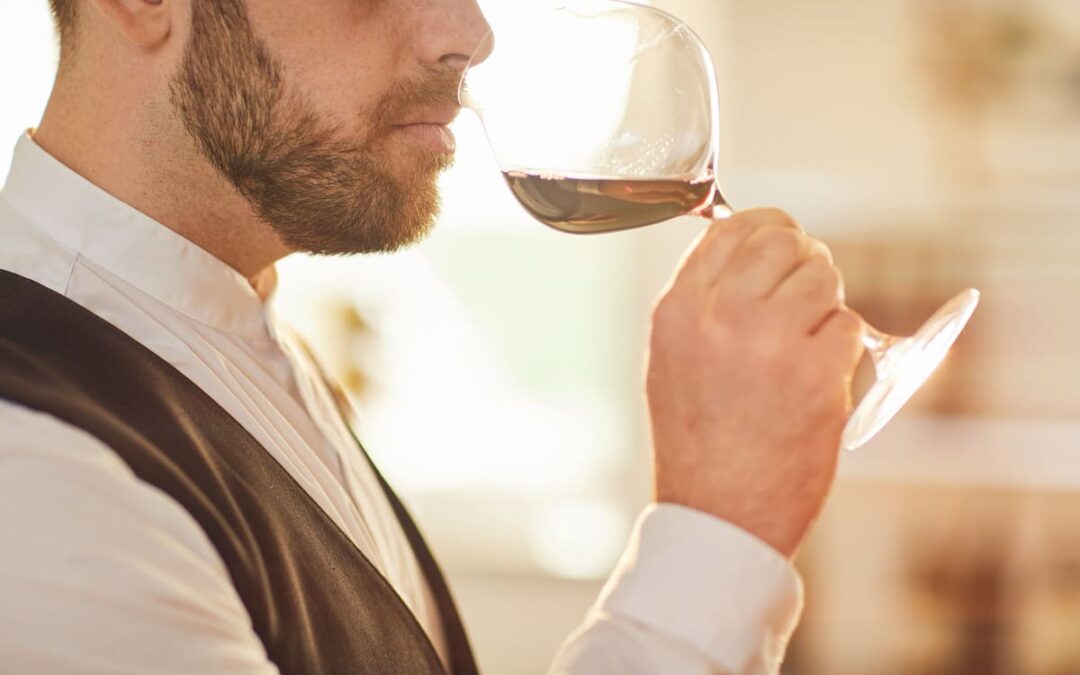In wine tasting, smell is the most important sense of all. Your sense of smell is ever present, regardless of your wine-tasting technique, while tasting is more intermittent. From the moment you open the bottle until you savor the final sips, the fragrance of the wine is always present.
While our mouths, tongues, and tastebuds do play an essential role in tasting wine, it is your nose that is doing most of the work. While the tongue does differentiate between sweet, sour, bitter, salty, and savory, it really only accounts for about 20% of the total perception. Your nose, however, can detect the other 80% or more of what is estimated at 2000 different smells.
Unlocking the Bouquet: Swirling, Sniffing, and Identifying Aromas
Once the bottle is open and begun to pour, wine tasters start the process of swirling and sniffing the wines to reveal the unique fragrances of the wine.
During this initial wine-tasting technique, drinkers will begin to reveal all the subtleties that define the wine. The aromas demonstrate much about the complexity, character, and quality. Older wines may display a more complex, aged character, while newer ones may reveal a fresh fruit aroma.
Beyond the Grape: Recognizing Secondary and Tertiary Aromas
Aromas are critical in wine tasting. Regardless of the wine-tasting technique, the nose detects the aroma in two different ways.
The first way the nose detects a wine’s characteristics is external, with the smell derived from sniffing the glass after the wine is poured. Here, you will sense specific smells that have evolved due to the raw material, winemaking, and aging. Most of what you perceive when smelling a glass of wine is the combination of the many compounds and their equilibrium with the other wine constituents.
Link Between Smell and Taste
The second way that specific aromas are detected is internal, which is noted after you have sipped the wine. The fragrances will travel through the inner passageways from the mouth to the nose to create a new impression. This passage is known as retronasal olfaction.
Retronasal olfaction, or judging the aromas after sipping, combines the taste and smell in a typical wine-tasting technique. At this point, you may begin to recognize more subtle notes that may cause you to identify the wine as outstanding or just average.
Training Your Nose
Wine experts tend to swish the wine throughout their mouths to identify each of the unique notes of a wine. This process tends to reveal the various qualities of the smell and flavor of the wine.
You can begin to learn more about tasting wines by focusing on your wine-tasting technique. Sample different wines together and, with each experience, pay close attention to both the primary and secondary fragrances.
Over time, you will begin to detect the differences, noting the various odors and tastes that differentiate each wine.
Visit Scott Harvey Wines in Amador County, California
Scott Harvey Wines in Amador County features several different varietals and blends. Guests may sample their Old Vine Zinfandels, Syrah, Barbera, Cabernet Sauvignon, and other tasty productions.
Guests are invited to join the Scott Harvey experts as they lead you through a set of wine-tasting techniques. You will learn about, taste, and enjoy the Scott Harvey wines as you also explore their three magnificent tasting settings.
For more information about future wine tastings, visit the Scott Harvey Wines website. Or you may phone to make your reservation at (209)-245-3670.

